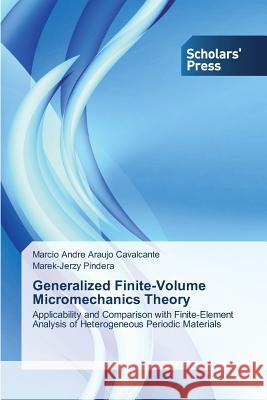Generalized Finite-Volume Micromechanics Theory » książka
Generalized Finite-Volume Micromechanics Theory
ISBN-13: 9783639712872 / Angielski / Miękka / 2014 / 260 str.
Micromechanics of heterogeneous media plays an important role in the development of new generations of advanced material systems, enabling efficient analyses of composite materials with complex geometries, circumventing the traditional trial-and-error approach, producing substantial cost savings. The unit cell problem to the analysis of periodic heterogeneous materials is explored in this book, with emphasis on the generalized finite-volume direct averaging micromechanics (FVDAM) theory. Comparison of predictions by the generalized theory with its predecessor, analytical and finite element results illustrates substantial improvement in the satisfaction of interfacial continuity conditions at adjacent subvolume faces of the discretized unit cell microstructure, producing smoother stress distributions and good interfacial conformability. This improvement is particularly important in the finite-deformation domain wherein large differences in adjacent subvolume face rotations may lead to the loss of mesh integrity. The presentation is accessible to engineers and scientists involved in the development of finite-volume techniques, with particular interest in advanced material systems.
Micromechanics of heterogeneous media plays an important role in the development of new generations of advanced material systems, enabling efficient analyses of composite materials with complex geometries, circumventing the traditional trial-and-error approach, producing substantial cost savings. The unit cell problem to the analysis of periodic heterogeneous materials is explored in this book, with emphasis on the generalized finite-volume direct averaging micromechanics (FVDAM) theory. Comparison of predictions by the generalized theory with its predecessor, analytical and finite element results illustrates substantial improvement in the satisfaction of interfacial continuity conditions at adjacent subvolume faces of the discretized unit cell microstructure, producing smoother stress distributions and good interfacial conformability. This improvement is particularly important in the finite-deformation domain wherein large differences in adjacent subvolume face rotations may lead to the loss of mesh integrity. The presentation is accessible to engineers and scientists involved in the development of finite-volume techniques, with particular interest in advanced material systems.











